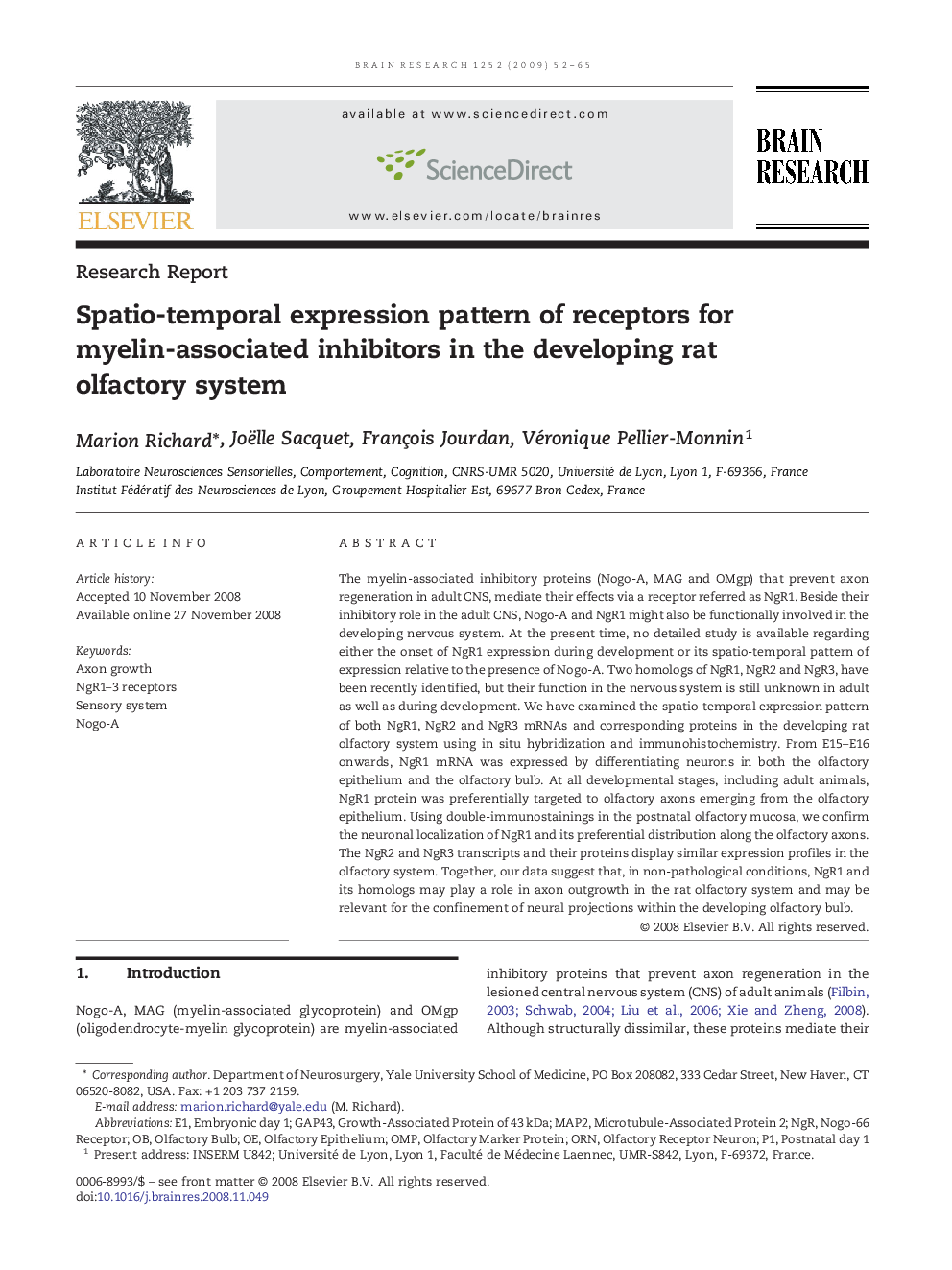| Article ID | Journal | Published Year | Pages | File Type |
|---|---|---|---|---|
| 4328583 | Brain Research | 2009 | 14 Pages |
Abstract
The myelin-associated inhibitory proteins (Nogo-A, MAG and OMgp) that prevent axon regeneration in adult CNS, mediate their effects via a receptor referred as NgR1. Beside their inhibitory role in the adult CNS, Nogo-A and NgR1 might also be functionally involved in the developing nervous system. At the present time, no detailed study is available regarding either the onset of NgR1 expression during development or its spatio-temporal pattern of expression relative to the presence of Nogo-A. Two homologs of NgR1, NgR2 and NgR3, have been recently identified, but their function in the nervous system is still unknown in adult as well as during development. We have examined the spatio-temporal expression pattern of both NgR1, NgR2 and NgR3 mRNAs and corresponding proteins in the developing rat olfactory system using in situ hybridization and immunohistochemistry. From E15-E16 onwards, NgR1 mRNA was expressed by differentiating neurons in both the olfactory epithelium and the olfactory bulb. At all developmental stages, including adult animals, NgR1 protein was preferentially targeted to olfactory axons emerging from the olfactory epithelium. Using double-immunostainings in the postnatal olfactory mucosa, we confirm the neuronal localization of NgR1 and its preferential distribution along the olfactory axons. The NgR2 and NgR3 transcripts and their proteins display similar expression profiles in the olfactory system. Together, our data suggest that, in non-pathological conditions, NgR1 and its homologs may play a role in axon outgrowth in the rat olfactory system and may be relevant for the confinement of neural projections within the developing olfactory bulb.
Keywords
Related Topics
Life Sciences
Neuroscience
Neuroscience (General)
Authors
Marion Richard, Joëlle Sacquet, François Jourdan, Véronique Pellier-Monnin,
